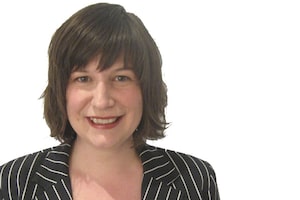‘We have this belief that you never build something great by doing it the same way that other people have done it,’ says Facebook chief executive officer Mark Zuckerberg.ALBERT GEA/Reuters
Thinking outside the box. Having a light bulb moment. Building a better mousetrap.
These familiar idioms have been used to describe the act of innovation for decades. But what does it mean to be innovative in the 21st century?
According to Facebook founder Mark Zuckerberg, speed and daring have a lot to do with it. He's known for the motto: "Move fast and break things."
In a 2009 video interview with Business Insider, Mr. Zuckerberg expanded on his risk-taking mantra. "The idea was unless you're breaking some stuff, you're not moving fast enough. … We have this belief that you never build something great by doing it the same way that other people have done it."
Forward-thinking Tesla Motors founder Elon Musk suggests that anyone who wants to innovate should look to physics for inspiration.
"Boil things down to their fundamental truths and reason up from there, as opposed to reasoning by analogy," he said in a 2013 interview with TED curator Chris Anderson. "Through most of our life, we get through life by reasoning by analogy, which essentially means copying what other people do with slight variations. … But when you want to do something new, you have to apply the physics approach. Physics is really figuring out how to discover new things that are counterintuitive, like quantum mechanics."
Just don't forget to seek advice from the smart people around you, added Mr. Musk. "Really pay attention to negative feedback, and solicit it, particularly from friends," he said. "This may sound like simple advice, but hardly anyone does that, and it's incredibly helpful."
Apple co-founder Steve Jobs told Wired magazine in 1996, "Creativity is just connecting things. When you ask creative people how they did something, they feel a little guilty because they didn't really do it, they just saw something. It seemed obvious to them after a while."
Virgin Group founder Richard Branson has a similar mantra: A-B-C-D – Always Be Connecting the Dots.
The 12 trailblazers selected as the winners of The Globe and Mail's Innovators at Work contest all see things a little differently, if their remarkable accomplishments are any indication.
For example, Shana Kelley of Xagenic is challenging the idea that testing for disease has to be done in a lab or a hospital. Jessica Ching is doing the same thing for cervical cancer, with HerSwab, a self-test that can be done at home. Clayton Bear of New Energy Corp. is challenging the common perception of how we generate power, with portable water turbines that can be used anywhere there's a river or stream.
Toni Desrosiers of Abeego took the convenience of plastic wrap and asked: Why does this have to be disposable? Heather Payne saw an imbalance in the number of women in the tech industry and set out to change it with her Ladies Learning Code workshops. Dennis Filips created the iClamp, a medical device to stop bleeding that's so simple, anyone could use it.
Sheldon Levy, president and vice chancellor at Ryerson University in Toronto and an Innovators at Work contest judge, said he was impressed by the solutions that finalists found to everyday problems. "They were solving things that all of us run into each and every day, or if they were in a niche area, each and every month," he said. "They weren't saying, 'I'm going to send a person to the moon,' they were very practical."
Judge Annette Verschuren, chair and chief executive officer of NRStor Inc., said she was encouraged by the number of women who were finalists. (Indeed, the winners were split 50/50.) "I also liked the environmental focus, which I think tells you something," she said. "It tells me that society is concerned about this issue and that there are market opportunities for it."
Judge Dan Debow, senior vice-president of emerging technologies at Salesforce.com, admired that each of the winners showed persistence over years of developing their innovative products. "It took a while, but they kept going, they kept trying," he said.
Stamina is also a quality touted by Biz Stone, co-founder of Twitter. As he said in his 2014 book, Things a Little Bird Told Me, "Timing, perseverance, and 10 years of trying will eventually make you look like an overnight success."
 Shelley White
Shelley White